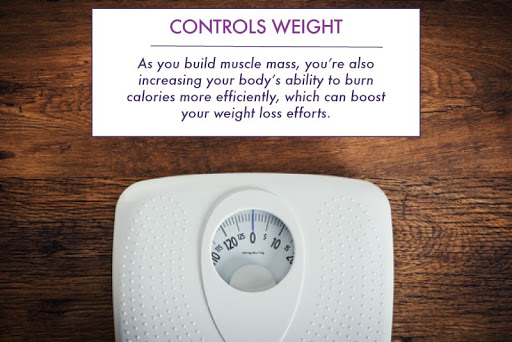The 4 Most Overlooked Health Benefits of Strength Training for Women
All too often, women decide against strength training because they don’t want to “bulk up” or “lose their curves.” But the truth is, a little strength training can go a long way when it comes to both improving your overall health and achieving your weight loss goals. Regular strength training isn’t going to take away from your fitness results–in fact, it can only enhance your body composition and can act as a preventive anti-aging tool for your entire body.
To bust these myths surrounding weight training for women and to set the record straight, here are some of the most overlooked health benefits of this activity that you could be missing.
1. Prevents Loss of Muscle Mass

You may have already noticed that as we age, our bodies gradually swap out muscle mass for fat storage, which can alter our body shape and could lead to a variety of medical issues such as diabetes and osteoporosis (The Lancet: Diabetes and Endocrinology). You can counteract this effect, however, by adopting a regular strength training routine.
This will not only improve your muscle mass, but it will also prevent the replacement of muscle with excess fat. As an added bonus, you should notice that weight lifting can also deliver the lean, toned results that you may not be able to otherwise achieve, even if you’re eating all the right things and sticking to a cardio-only exercise regimen.
2. Controls Weight

Whether you’re looking to lose or maintain weight, strength training is an invaluable tool. As you build muscle mass, you’re also increasing your body’s ability to burn calories more efficiently, which can boost your weight loss efforts. If you’re looking to maintain your weight, no matter your age, strength training can help by preserving your lean muscle and upping your metabolism, which also decreases with age (Mayo Clinic).
3. Reduces the Risk of Osteoporosis

Strength training often doesn’t get enough credit for its connection to healthy, strong bones. Weight-bearing exercises, whether that’s lifting free weights, resistance training, or climbing stairs, have been shown to increase bone density, thus decreasing your risk for developing osteoporosis. Additionally, increased muscle mass can help to provide support for your bones when performing daily, routine activities (Medicine and Science in Sports and Exercise).
4. Lowers Your Risk of Injury

In addition to lowering your risk of osteoporosis, strength training can significantly lower your risk of injury by providing the muscle support, strength, and balance necessary to protect your joints and bones (British Journal of Sports Medicine). As we age, our bodies become more susceptible to injury, whether from sports or accidental falls, making strength training more important for women in their 40s and beyond.
The Bottom Line
If you’ve been skipping strength training, you could be hindering your weight loss results, athletic performance, and possibly putting your overall health at risk. Who knows, you may enjoy weight training exercises and might welcome a break from routine cardio workouts. The best exercise strategy will combine cardio (aerobic) and strength training (anaerobic) exercises to produce a well-rounded, strong body composition.
If you’re interested in women’s health concerns, sign up today to take part in the Women’s Health Conversations 2016 Conference, which will be held in Pittsburgh, PA. Whether you’re interested in preventive health tips, motivation to get up and get moving, or a wide variety of other women’s-health-related topics, there’s something for everyone at this conference. Become a part of the global conversation that aims to educate, empower, and entertain women of all ages and backgrounds.

